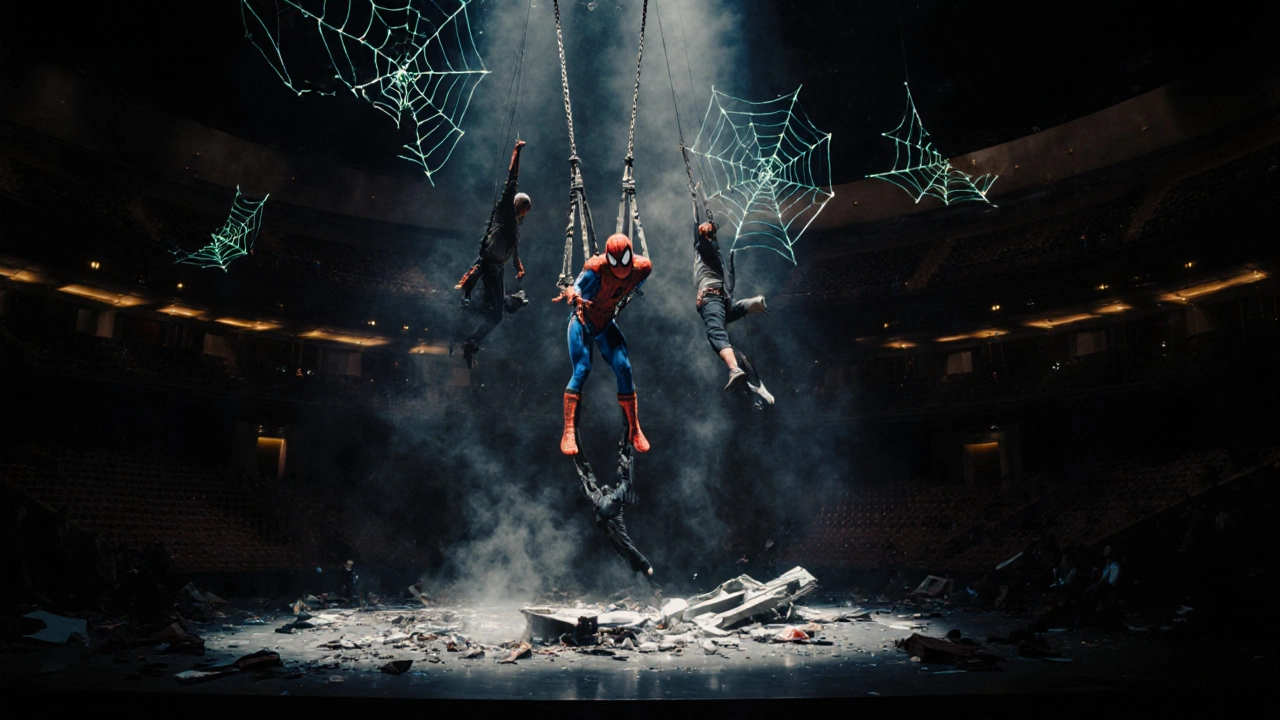Jekyll & Hyde flop: Why this musical failed and what it teaches us about Broadway
When Jekyll & Hyde, a Broadway musical based on Robert Louis Stevenson’s classic novella about a doctor who splits into two personas opened in 1997, it had everything: a powerful rock-infused score, a star performance by Steve Barton, and a dark, gripping story. Yet, despite early buzz and a loyal fanbase, it closed after just 570 performances—far short of the 1,000+ needed to break even. This wasn’t just a quiet exit. It was a Jekyll & Hyde flop that became a cautionary tale in theater circles. Why did a show with such clear potential crash so hard? The answer isn’t just about tickets sold. It’s about timing, marketing, and the brutal math behind Broadway’s biggest risks.
Another key player in this story is Broadway box office, the real-time system tracking ticket sales, premium pricing, and revenue trends for New York theater productions. In the late ’90s, Broadway was shifting. Shows like The Lion King and Les Misérables were locking in long runs with family-friendly appeal. Jekyll & Hyde didn’t fit that mold. It was intense, violent, and emotionally heavy—hard to sell as a date night or tourist must-see. Meanwhile, musical theater box office, the broader economic engine that determines which shows survive and which vanish was tightening its grip on profitability. Producers started betting on spectacle over substance, and Jekyll & Hyde got caught in the crossfire. Even with strong reviews and passionate fans, it couldn’t compete with the machine.
What’s more, the show’s marketing never quite figured out who it was for. Was it a goth rock fan? A theater purist? A horror lover? The ads were all over the place. Compare that to Hadestown or Hamilton, which knew their audience inside out. Jekyll & Hyde had a cult following, but cults don’t fill 1,500-seat theaters night after night. The show also suffered from inconsistent casting—stars came and went, and the energy shifted with each new lead. That kind of instability kills momentum.
Today, fans still debate whether it was the score, the book, the marketing, or just bad luck. But the truth is, it was all of them. The Jekyll & Hyde flop didn’t fail because it was bad—it failed because it didn’t fit the system. And that’s what makes it so interesting. It’s not just a footnote in theater history. It’s a mirror. If you’ve ever wondered why some shows explode and others vanish, this one tells you everything you need to know about the gap between art and commerce.
Below, you’ll find posts that dig into what makes Broadway shows succeed—or collapse. From ticket pricing tricks to the hidden rules of audience appeal, these articles unpack the real forces behind the curtain. Whether you’re a longtime fan or just curious about why some shows last and others don’t, you’ll find answers here.
Spider-Man: Turn Off the Dark is the biggest flop in Broadway history, losing over $60 million despite a $75 million budget. Learn why it failed, how it changed theater safety, and what other shows came close.

